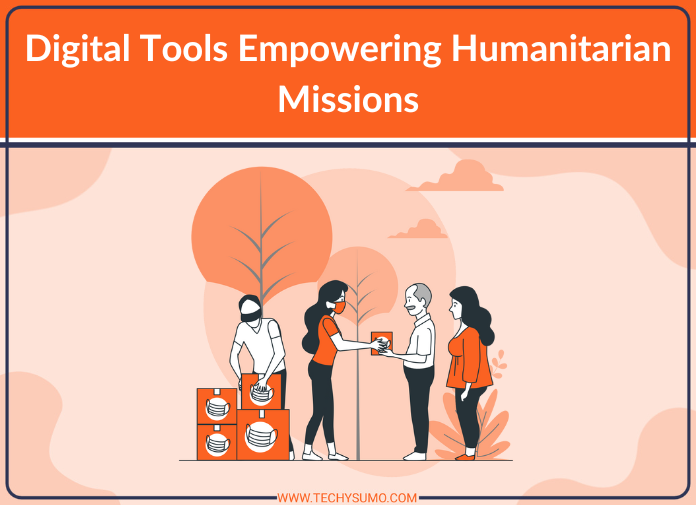Technology has transformed nearly every aspect of modern life—and humanitarian missions are no exception. In times of crisis, digital tools provide the infrastructure needed to respond quickly, coordinate effectively, and deliver aid where it’s needed most. Whether it’s a natural disaster, conflict zone, or public health emergency, technology is helping relief organizations operate with greater speed, accuracy, and impact.
Table of Contents
Real-Time Data Collection and Mapping
When disaster strikes, the first hours are crucial. Rapid needs assessment, route planning, and identifying at-risk populations all depend on accurate information. Geographic information systems (GIS) and remote sensing tools have revolutionized this process. Aid workers can now use satellite imagery, drone footage, and AI-generated heat maps to understand damage patterns and deploy resources accordingly.
Digital mapping also allows for dynamic updates. As new data becomes available, plans can be adjusted in real time—something that would have been impossible with paper-based systems of the past.
Communication Tools for Rapid Coordination
Field operations are often chaotic, with workers, volunteers, and coordinators spread across vast, unstable regions. Digital communication platforms like mobile apps, encrypted messaging services, and cloud-based project management systems are crucial for keeping everyone informed and connected.
These tools enable instant updates, secure document sharing, and seamless coordination, even in areas with limited infrastructure. Aid teams can report on conditions, request supplies, and share progress, all in real time, boosting overall mission efficiency.
Also Read
AI and Predictive Technology
Artificial intelligence is now playing a key role in planning and executing humanitarian missions. By analyzing massive datasets, such as weather forecasts, migration patterns, and social media activity, AI can predict where and when disasters are most likely to occur. This gives aid organizations the chance to prepare in advance, allocate resources, and reduce response time.
AI also helps in categorizing images of damaged areas, scanning for signs of survivors in drone footage, and translating languages in real time. These applications not only speed up rescue and recovery efforts but also reduce the strain on human personnel.
Enhancing Disaster Relief
Nowhere is the value of digital tools more evident than in disaster relief. When floods, fires, hurricanes, or earthquakes occur, humanitarian agencies must act immediately. Through apps that monitor weather and seismic activity, organizations can issue early warnings and evacuate vulnerable populations in time.
Additionally, digital logistics platforms enable real-time tracking of emergency supplies, vehicles, and personnel. Volunteers on the ground can check in via mobile devices, confirm deliveries, and update local coordinators instantly. This level of precision has dramatically improved how quickly help reaches those in need.
Blockchain and Digital Identity
In regions where people may have lost their identification or records due to displacement or destruction, digital identity systems are proving invaluable. Blockchain-based ID tools are secure, decentralized, and accessible from any device. They allow displaced individuals to verify who they are and access food, shelter, healthcare, and financial support.
Blockchain also supports transparent cash transfer programs. Aid organizations can distribute funds directly to recipients without intermediaries, ensuring that every dollar is accounted for and reducing the risk of fraud.
Drones for Assessment and Delivery
Drones have emerged as vital tools in areas that are too dangerous or difficult to access. They can be deployed to assess damage, identify survivors, or even drop lightweight supplies like food, water, and first aid kits. High-resolution cameras and thermal imaging allow drones to cover large areas quickly and safely, giving ground teams a clear understanding of where to focus their efforts.
In mountainous or remote terrain, where roads may be impassable, drones fill a critical gap by delivering life-saving materials in record time.
Training and Volunteer Management
Digital platforms are also changing the way humanitarian organizations train staff and manage volunteers. Online courses, video tutorials, and interactive simulations allow workers to prepare for real-world scenarios from the safety of their homes or local centers.
Volunteer management systems match skills to needs, allowing coordinators to quickly deploy the right people to the right place. From medical professionals and logistics experts to translators and mental health workers, digital tools ensure that everyone is used effectively.
Crowdfunding and Community Engagement
The power of the internet has made it easier than ever to rally global support. Humanitarian organizations now use crowdfunding platforms and social media to raise funds and share real-time updates on their missions. This transparency builds trust with donors and keeps the public engaged in ongoing efforts.
Mobile donation options, such as text-to-give and app-based payment systems, further broaden access and encourage participation. Even cryptocurrencies are becoming a part of global giving, offering an alternative route for donations during emergencies.
Looking Ahead
Digital innovation is no longer a luxury in humanitarian work; it’s a necessity. The speed, reach, and intelligence offered by modern tools have reshaped what’s possible during times of crisis. By integrating GIS mapping, AI analytics, blockchain security, and drone logistics, organizations are delivering aid with unprecedented precision and scale.
These tools not only improve outcomes but also protect those delivering help, making operations safer and more sustainable in the long term. As technology continues to evolve, so too will our ability to respond to human suffering with compassion, efficiency, and dignity.






